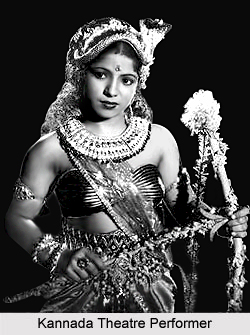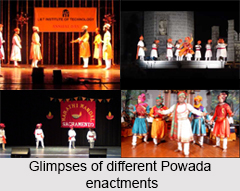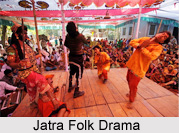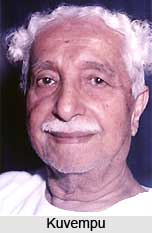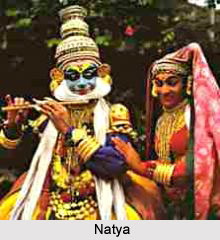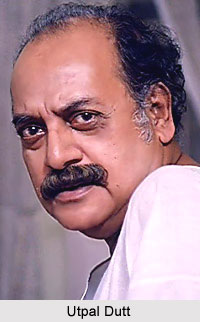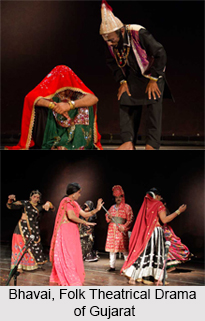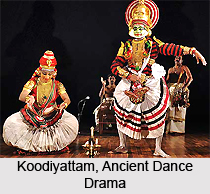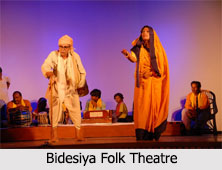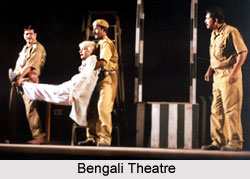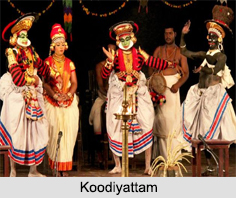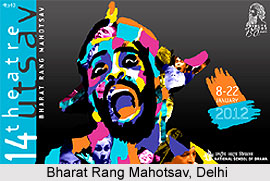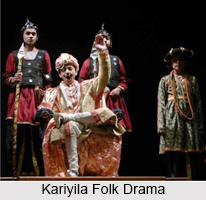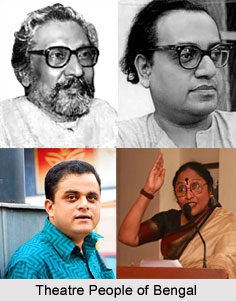Bhagati is a Sindhi folk form. The antiquity of this style of open-air theatre cannot be dated precisely. However, it appears from external evidence that Bhagati was in vogue in the eighteenth century.
A Bhagati band comprises the leading Bhagatu i.e. plural Bhagata, one or two supporting companions i.e. jhelis or bolryas, and a few disciples of the leader. The accompanists consist of a harmonium player, a sarangi player, and two percussionists i.e. a dhokri on tablas and a dholaki or drummer. Some troupes also include one jester. When performing, the Bhagata are dressed in flowing white jamo or peshwaz i.e. gown reaching the ankles and red bochhan i.e. sash draped round the shoulders. It flows down to the knees and loosely held at the waist by a cummerband. They put on a red pagri i.e. turban, and are adorned with kundhak i.e. earrings, tilak i.e. mark on their foreheads, and chher i.e. anklets of small bells.
The venue is an open village street, but after Independence and the migration of Sindhi Hindus to India, Bhagati has been staged in regular theatres in cities. It is performed before invited audiences. It is traditionally performed in the calm of the night. The spectators sit on carpets spread in the street. The latecomers have to watch standing. The arena and a pathway are about 30 m long. These are reserved for the troupe`s easy movement. The leading Bhagatu takes position at one end of the pathway, surrounded by the accompanists. The supporting Bhagata place themselves on the pathway at appropriate distances but keep changing their positions while performing.
The troupes` present shows on the festive occasions like Holi, Baisakhi, Diwali, or during the anniversaries of the saints. The village panchayat or religious institution invites them for this purpose. The performance starts with an invocation to the Lord followed by a couple of devotional songs. The leading Bhagatu then starts narrating a popular folktale in dialogues, interspersed with songs, music, dance, and anecdotes. The supporting Bhagata repeat whatever he says. The Sindhi folk romances normally enacted in Bhagati are those of Dodo and Chanesar, Sorath and Rai Dyach, Umar and Marui, Mumal and Rano, Lila and Chanesar, Rup and Basant.
The specialty of Bhagati is its dancing peculiar only to Sindhi minstrels. It has vigorous, rhythmic footwork, and the pheri holds the audience in complete thrall. The dance goes on and on, ending when the music reaches a crescendo. The music is based on classical ragas like Kohiyari, Jog, Rano, Asa, Prabhati, Sindhu Bhairavi, Tilang, Manjh, and Sindhu Sorath or Maru Vihag. Bhagati concludes in the early hours of the morning and, if the story has not reached its end, it continues the next evening.







